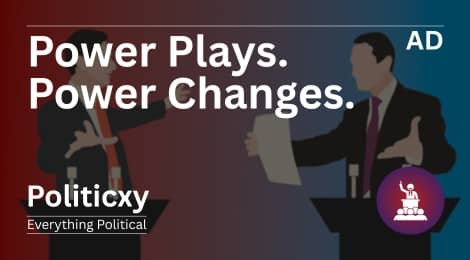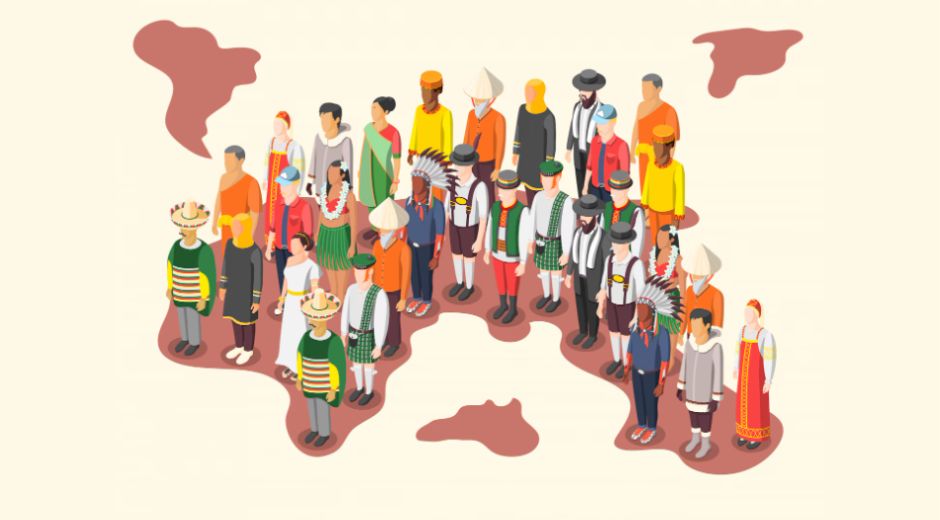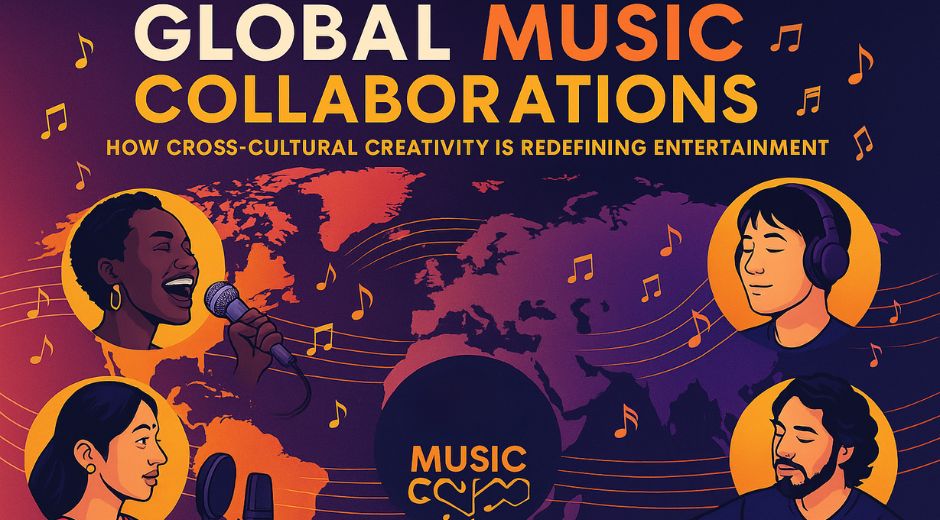Music Streaming Economics: How Digital Platforms Are Redefining the Global Sound Industry
Music Streaming Economics: How Digital Platforms Are Redefining the Global Sound Industry
Music Streaming Economics: How Digital Platforms Are Redefining the Global Sound Industry
The rise of music streaming has not only transformed the way audiences consume sound but also redefined the entire economic structure of the global entertainment industry. Music Streaming Economics delves into the financial, cultural, and technological shifts behind this digital revolution one that has both empowered artists and reshaped traditional business models.
In the past decade, platforms such as Spotify, Apple Music, and YouTube Music have become dominant players in music distribution. What began as a convenient way to access songs online has evolved into a complex economic ecosystem, influencing everything from royalty structures to fan engagement strategies.
As Newspapersio explores, understanding the economics behind streaming is crucial for both creators and consumers in today’s hyper-connected entertainment landscape.
Technology’s Role in Connecting Creators
Technology plays an essential role in facilitating Global Music Collaborations. Artists can now collaborate remotely, exchanging tracks and creative ideas through digital workstations and cloud platforms. Artificial intelligence tools are helping producers merge traditional sounds with futuristic elements, enabling limitless creative experimentation.
This accessibility has democratized music production, allowing emerging artists from developing regions to reach international audiences. Platforms like Newspapersio.com highlight how digital evolution has erased many of the barriers that once limited creative exchange.
The Evolution of Music Distribution
For much of the 20th century, the music industry was defined by physical sales vinyl, cassette tapes, and compact discs. The advent of digital downloads in the early 2000s revolutionized access but also disrupted established revenue models. With streaming, the shift became complete: ownership was replaced by access.
Instead of buying albums, listeners now subscribe to digital platforms that provide millions of tracks for a monthly fee. This transition has created new opportunities for artists to reach global audiences but has also raised concerns about fair compensation and sustainability.
Streaming now accounts for more than two-thirds of recorded music revenue worldwide. According to Forbes, global streaming revenues surpassed $17 billion last year, marking a 12% year-over-year increase. Yet, despite these impressive numbers, artists often see only a fraction of the profit.
How Streaming Platforms Generate Revenue
Streaming platforms typically operate on two main models: subscription-based and ad-supported. Subscription models generate consistent income through monthly fees, while ad-supported versions rely on user data and targeted advertising.
The economics of these models depend heavily on volume. More users mean higher revenue potential, but also more payouts to record labels, publishers, and artists. Most streaming services pay artists a small fraction per stream often between $0.003 and $0.005.
This creates a system where success depends on massive streaming numbers. A single viral hit can yield millions of plays, but independent musicians often struggle to achieve profitability without strong promotional support.
The Artist’s Dilemma: Exposure vs. Compensation
While streaming platforms democratize access, they have also introduced a paradox. Artists can reach audiences across continents, but financial rewards often remain elusive. The sheer volume of available music means that competition is intense, and algorithms often favor already popular artists.
Emerging musicians face the challenge of balancing visibility with fair earnings. Playlists, viral moments, and social media engagement have become critical tools for discovery. However, the majority of artists still depend on touring, merchandising, and crowdfunding to sustain their careers.
The debate over royalty rates has intensified. Some industry analysts advocate for a “user-centric payment model,” where subscription fees are distributed based on the specific artists each user listens to, rather than being pooled into a generalized payout system. This approach, proponents argue, would ensure fairer compensation for smaller artists.
Labels and the New Middlemen
Record labels remain influential in the streaming era, though their role has evolved. Rather than controlling physical distribution, they now negotiate digital licensing deals and manage rights. Labels often secure favorable terms with streaming services, taking a percentage of royalties before artists receive payment.
This dynamic raises questions about the balance of power in the digital music economy. Independent artists can technically distribute music directly to streaming platforms via aggregators like DistroKid or TuneCore, but achieving prominence without label support remains difficult.
Some experts predict that as technology advances, blockchain systems could enable transparent royalty tracking, ensuring fairer compensation across the industry.
The Role of Data in Streaming Economics
One of the most transformative aspects of streaming is data analytics. Every play, skip, and playlist addition provides insights into consumer behavior. For artists and record companies, this data is gold — it shapes marketing strategies, tour planning, and release timing.
Streaming data reveals not only what people listen to but also when and where they listen. This allows for hyper-targeted promotion, enabling smaller acts to identify niche audiences and build organic followings.
However, the same data-driven algorithms that help emerging artists can also reinforce existing hierarchies. When recommendation systems prioritize already successful tracks, the diversity of what listeners discover can shrink.
Regional Trends and Cultural Exchange
Music Streaming Economics is also reshaping cultural landscapes worldwide. Regions like Latin America, Africa, and Asia have experienced explosive growth in streaming adoption. Local artists are reaching international audiences without needing global label representation.
Platforms now invest heavily in regional playlists, language-specific recommendations, and cultural collaborations. The result is a more interconnected global soundscape. Genres like K-pop, Afrobeats, and Latin reggaeton have transcended borders, partly due to the accessibility streaming offers.
As global connectivity grows, so does cross-cultural collaboration. Artists from different continents now co-produce music in real time, blending styles and creating hybrid genres that reflect our globalized world.
The Power of Playlists
Playlists have become the new radio stations of the digital age. Editorial and algorithmic playlists influence billions of streams daily, determining which songs gain exposure. Securing placement on a major playlist can transform an artist’s career overnight.
Curators, influencers, and digital editors now act as modern gatekeepers. While some playlists are curated by humans, most rely on machine-learning systems trained on user behavior. This blend of human judgment and AI-driven insight defines much of today’s listening experience.
Playlists also serve as marketing tools. Brands and advertisers partner with streaming platforms to create sponsored playlists that align with lifestyle or product campaigns.
Ethical and Economic Challenges
Despite its success, the streaming model faces criticism for undervaluing artistic labor. Artists often rely on tens of thousands of streams just to earn the equivalent of a single album sale. Moreover, issues of transparency in revenue distribution persist.
Some governments are exploring legislation to ensure fairer royalty structures. For instance, discussions in the European Union and the United Kingdom focus on increasing payout rates and mandating greater reporting transparency.
Piracy, while reduced compared to the pre-streaming era, still exists in new forms such as unauthorized redistribution and playlist manipulation. These challenges require ongoing technological and policy solutions.
The Broader Entertainment Economy
Streaming economics also influence adjacent industries like film, advertising, and gaming. Cross-platform collaborations between musicians and streaming video platforms have become increasingly common. Music licensing for video content, podcasts, and gaming soundtracks represents a major revenue stream for creators.
As platforms diversify, the boundaries between entertainment sectors blur. Interactive experiences, virtual concerts, and digital fan events are redefining what it means to consume and participate in music culture.
Conclusion
Music streaming has democratized access to sound but has also created new economic complexities. Understanding Music Streaming Economics is vital for anyone involved in entertainment, from artists to policymakers.
The insights shared by Forbes and Politixy reveal an industry in flux innovative yet imperfect, connected yet uneven. Analysis from Newspapersio.com continues to explore these evolving dynamics, emphasizing the need for transparency, fairness, and creativity in the digital age.
In the end, the sound of progress echoes not just through music, but through the structures that sustain it.
The Pulse of Sport

Economic Blocs: How Regional Alliances Are Redefining Global Power
Economic Blocs: How Regional Alliances Are Redefining Global Power examines how nations unite through trade and policy to shape the world economy.

Blue Zones: Unlocking the Secrets of Longevity and Purposeful Living
Blue Zones: Unlocking the Secrets of Longevity and Purposeful Living explores how specific communities thrive through balance, purpose, and healthy habits.

Soundscapes: How Sonic Design Shapes Emotion and Immersion in Modern Culture
Soundscapes: How Sonic Design Shapes Emotion and Immersion in Modern Culture explores how music, noise, and silence influence perception and creativity.

Edge Intelligence: The Next Frontier of Smarter, Faster, and Decentralized Computing
Edge Intelligence: The Next Frontier of Smarter, Faster, and Decentralized Computing explores how AI and edge systems redefine real-time data processing.

Sanctions and Global Power: How Economic Pressure Shapes Modern Diplomacy
Sanctions and Global Power: How Economic Pressure Shapes Modern Diplomacy explores how nations use trade, finance, and policy to influence global decisions.

Circadian Rhythm: How Your Body’s Internal Clock Shapes Health and Performance
Circadian Rhythm: How Your Body’s Internal Clock Shapes Health and Performance explores how daily cycles influence sleep, energy, mood, and longevity.

Immersive Theater: Redefining How Audiences Experience Storytelling
Immersive Theater: Redefining How Audiences Experience Storytelling explores how interactive performance reshapes art, emotion, and audience connection.

Digital Twins: How Virtual Replicas Are Powering Real-World Innovation
Digital Twins: How Virtual Replicas Are Powering Real-World Innovation explores how this technology reshapes industries from healthcare to aviation.

AI-Driven Cybersecurity: The Future of Digital Defense in a Hyperconnected World
AI-Driven Cybersecurity explores how artificial intelligence is transforming global digital defense, reshaping threat detection, and redefining the future of technology innovation. Insights

Music Streaming Economics: How Digital Platforms Are Redefining the Global Sound Industry
Music Streaming Economics explores how digital platforms are reshaping artist revenue, consumer habits, and global entertainment.

Digital Detox Habits: Reclaiming Wellness in a Hyperconnected World
Digital Detox Habits help individuals reduce screen time, restore mental clarity, and improve health. Explore insights from Newspapersio, Forbes, and TripBeyondTravel.













